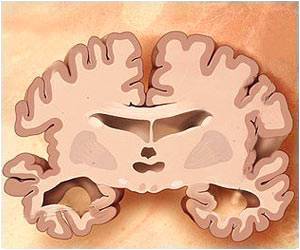
‘In patients with no record of mental health problems, almost every physical health condition increases the risk of suicide.’
Tweet it Now
The study was published in the American Journal of Preventive Medicine. Two of the conditions sleep disorders and HIV/AIDS represented a greater than twofold increase, while traumatic brain injury made individuals nine times more likely to die by suicide.While the rates of other causes of death have declined in recent years, suicide continues to trend upwards across all ages and genders. Many people who die by suicide do not have a prior mental health diagnosis, which means that patients at an increased risk for self-harm are somehow being missed by the mainstream healthcare system.
In an attempt to gain some insight into the disturbing rise in suicide rates and possible novel interventions, researchers examined whether there is a link between physical illness and suicide risk.
"These data represent among the first findings from areas across the U.S. documenting an increase in suicide risk for people with a variety of major physical health conditions," explained lead investigator Brian K. Ahmedani, PhD, LMSW, Director of Psychiatry Research, Behavioral Health Services Research Scientist, Center for Health Policy & Health Services Research, Henry Ford Health System, Detroit, MI.
"As our nation’s healthcare systems work diligently to provide the best care for their patients, these data help support the need for suicide prevention among those with a wide variety of physical health conditions."
Advertisement
Seventeen of 19 medical conditions investigated were linked to an increased suicide risk: asthma, back pain, brain injury, cancer, congestive heart failure, chronic obstructive pulmonary disorder, diabetes, epilepsy, HIV/AIDS, heart disease, hypertension, migraine, Parkinson’s disease, psychogenic pain, renal disorder, sleep disorders, and stroke.
Advertisement
"Although suicide risk appears to be pervasive across most physical health conditions, prevention efforts appear to be particularly important for patients with a traumatic brain injury, whose odds of suicide are increased nearly ninefold, even after adjusting for potential confounders," reported Dr. Ahmedani.
"This is the first large, multisite study conducted within the general U.S. population demonstrating a significant, large-magnitude relationship between brain injury and suicide."
According to this study, targeted interventions in primary care and specialty care may be the key to preventing suicides.
It’s reported that 80% of individuals who die by suicide make a healthcare visit in the year before their death and that 50% go to the doctor within four weeks of dying by suicide. Because most these patients do not have a diagnosed mental health problem, limiting suicide prevention efforts to standard behavioral healthcare settings may miss many of the individuals at risk.
"Several conditions, such as back pain, sleep disorders, and traumatic brain injury were all associated with suicide risk and are commonly diagnosed, making patients with these conditions primary targets for suicide prevention," concluded Dr. Ahmedani.
"Given that nearly every physical health condition was associated with suicide, widespread suicide prevention efforts in all healthcare settings seem warranted."
Source-Eurekalert









